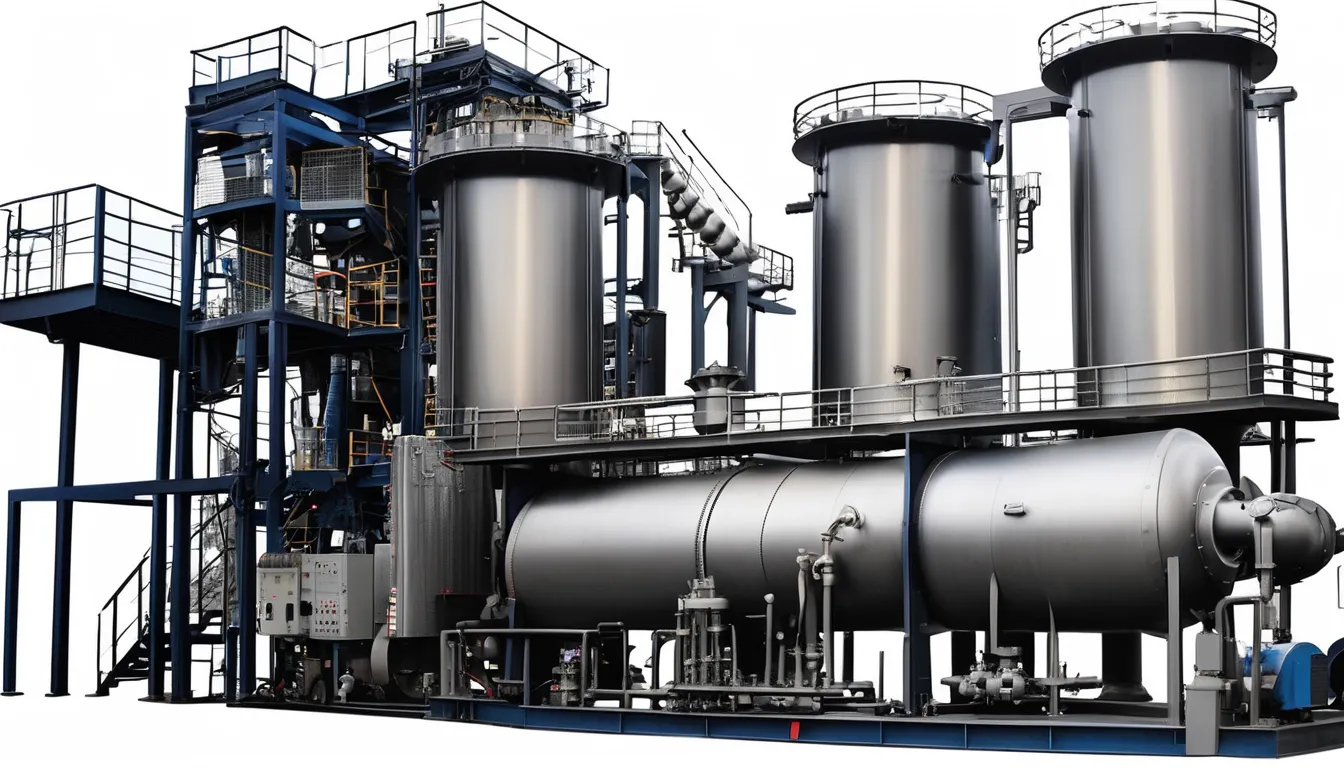Innovative Designs in Turbo Expander Technology

As you explore the realm of turbo expander technology, you’ll find that innovative designs are revolutionizing energy efficiency and performance. With advancements in materials and aerodynamic profiles, today’s systems are not only more efficient but also adaptable to various applications. Real-time control systems introduce a level of flexibility previously unseen, ensuring optimal performance under changing conditions. But what does this mean for the future of energy solutions, and how might these developments impact industries beyond power generation? The answers could reshape your understanding of energy technology.
Evolution of Turbo Expander Designs
The evolution of turbo expander designs showcases remarkable innovation and efficiency in energy conversion technologies. You might find it fascinating how these devices have transformed over the years to meet the increasing demands for energy efficiency and performance.
Initially, turbo expanders were relatively simple machines, but as technology advanced, engineers began to incorporate more sophisticated features.
You’ll notice that modern designs leverage computational fluid dynamics (CFD) to optimize flow characteristics and enhance performance. This shift allows for more precise control over energy extraction from gas streams, making these expanders not just more efficient, but also more reliable.
You’ll also see that advancements in aerodynamic design have led to reduced losses and increased output, maximizing the energy conversion process.
Furthermore, the integration of advanced control systems in turbo expander designs enables real-time adjustments, improving operational efficiency.
As you explore these designs, you’ll appreciate how each iteration builds upon the last, resulting in machines that aren’t only powerful but also compact and versatile.
It’s clear that the future of turbo expanders hinges on continued innovation, pushing the boundaries of what’s possible in energy conversion.
Materials Driving Innovation
As turbo expander designs continue to evolve, materials play a pivotal role in driving innovation and enhancing performance. You’ll find that advanced materials like titanium alloys and composite materials are becoming increasingly popular due to their high strength-to-weight ratios and excellent fatigue resistance.
These materials not only improve the expander’s efficiency but also extend its operational lifespan.
Moreover, the use of special coatings can enhance performance by reducing friction and wear during operation. For instance, ceramic coatings can withstand extreme temperatures, making them ideal for high-performance turbo expanders.
You might also consider how additive manufacturing is revolutionizing the way these components are produced. It allows for more complex geometries that were previously impossible, leading to better thermal management and improved fluid dynamics.
These innovations in materials significantly impact the operational efficiency of turbo expanders, enabling them to operate under more demanding conditions.
As you explore further, you’ll see that investing in cutting-edge materials is essential for staying ahead in the competitive landscape of turbo expander technology. Embracing these advancements won’t only enhance performance but also contribute to more sustainable energy solutions.
Advanced Aerodynamic Profiles
Advanced aerodynamic profiles are crucial for optimizing the performance of turbo expanders. By refining these profiles, you can significantly enhance the efficiency and reliability of your systems. The goal is to minimize drag and maximize the energy extracted from the working fluid.
With the right design, you’ll notice improved flow characteristics and reduced turbulence, which directly translate into better performance.
Here are some key aspects to consider when exploring advanced aerodynamic profiles:
- Blade Shape: The contour of blades can dramatically affect efficiency.
- Angle of Attack: Adjusting the angle can optimize flow dynamics.
- Surface Finish: A smoother finish helps reduce friction losses.
- Tip Clearance: Minimizing gaps between blades and casings can enhance performance.
- Flow Path Design: Streamlined paths reduce energy losses and improve overall efficiency.
Applications in Power Generation
In the realm of power generation, turbo expanders play a pivotal role in enhancing energy efficiency and output. You’ll find these devices employed in various settings, particularly in combined cycle power plants. Here, they convert excess pressure energy from gas streams into mechanical work, which can be used to drive generators or compressors. This process not only improves the overall efficiency of the plant but also allows you to harness energy that would otherwise be wasted.
In geothermal and waste heat recovery systems, turbo expanders are equally valuable. They help you convert thermal energy into electrical energy, contributing to cleaner power generation. By extracting energy from high-pressure gas streams, you can significantly reduce fuel consumption and emissions.
Moreover, in natural gas processing, turbo expanders facilitate the liquefaction of gases, enabling you to store and transport energy more efficiently.
This versatility illustrates how turbo expanders enhance various aspects of power generation, from improving efficiency to enabling the use of alternative energy sources. As you explore the applications of turbo expanders, you’ll see their importance in shaping a more sustainable and efficient energy future.
Future Trends and Developments
Looking ahead, turbo expander technology is set to evolve significantly, driven by advancements in materials and design.
You’ll likely see innovations that enhance efficiency and performance, making these systems even more valuable in various applications. As a user, you can expect increased reliability and reduced maintenance costs, thanks to the integration of smart technologies and predictive analytics.
Here are some exciting trends to watch for:
- Advanced Materials: New alloys and composites will improve durability and reduce weight.
- Digital Twin Technology: Simulation tools will optimize performance and maintenance schedules.
- Energy Recovery Systems: Enhanced designs will capture and utilize waste energy more effectively.
- Miniaturization: Smaller, more compact units will expand usage in diverse fields, including renewable energy.
- Sustainable Practices: Eco-friendly designs will become a priority, aligning with global sustainability goals.
Conclusion
In conclusion, the evolution of turbo expander technology showcases remarkable advancements that are reshaping energy efficiency. By leveraging innovative materials, refined aerodynamic designs, and real-time control systems, you can maximize performance across various applications. As you look to the future, keep an eye on emerging trends that promise to push the boundaries even further, unlocking new potential in power generation and sustainable energy solutions. Embrace these innovations to stay ahead in this dynamic field.
